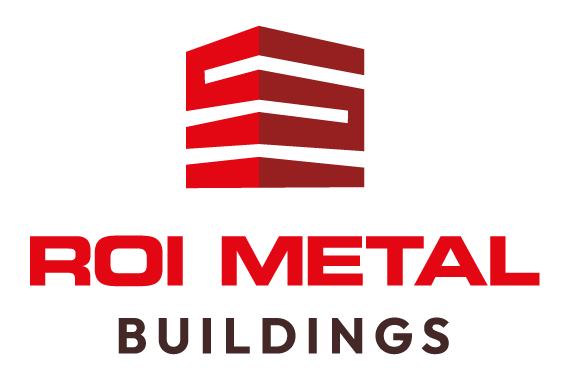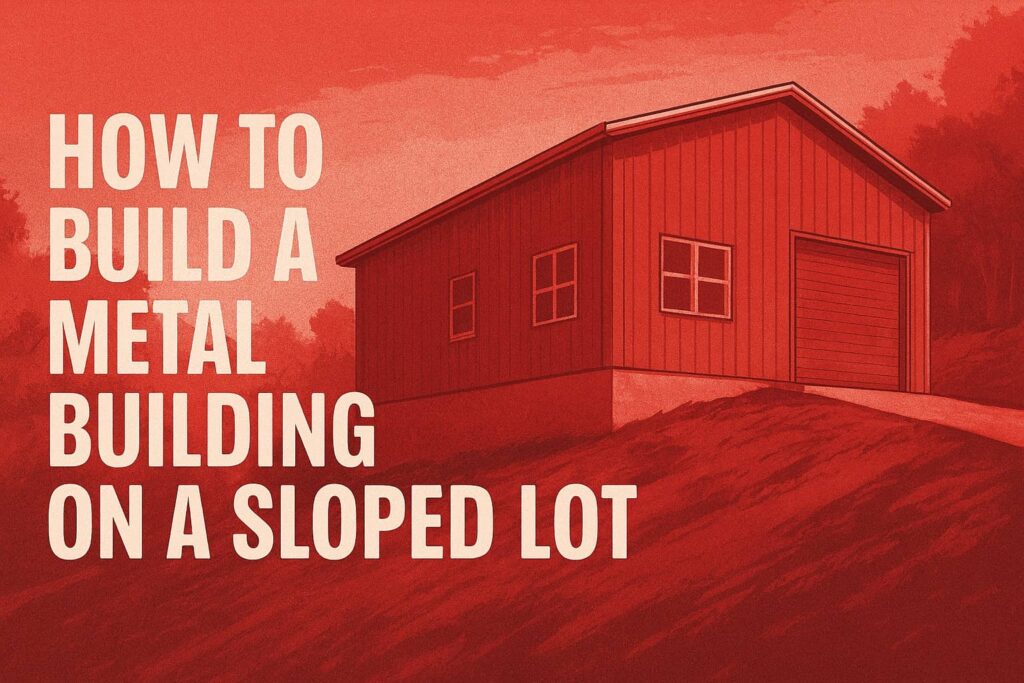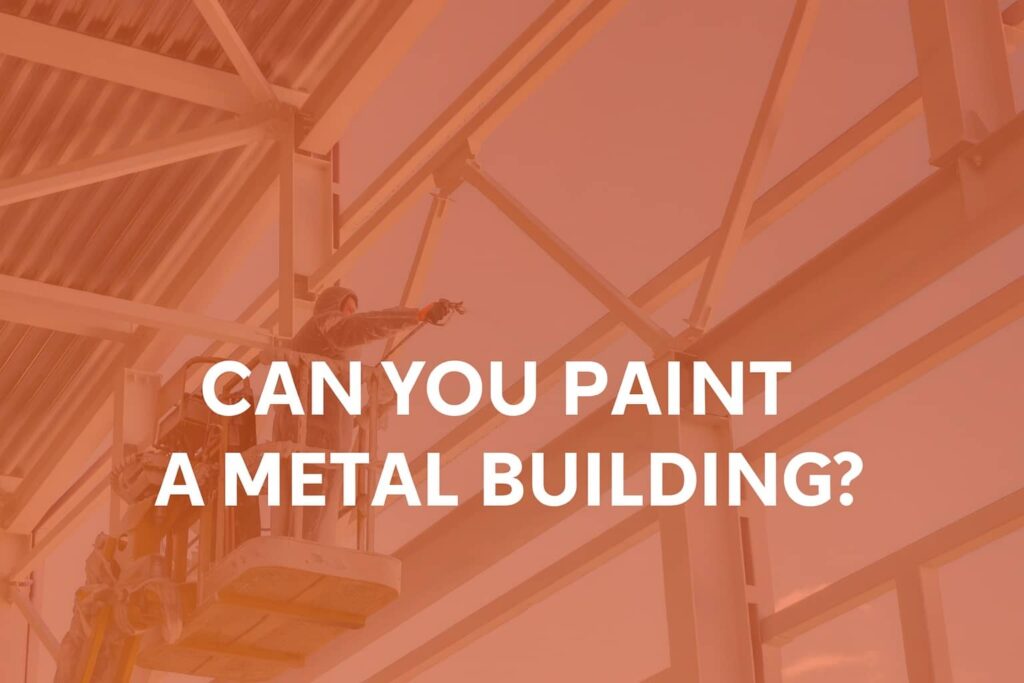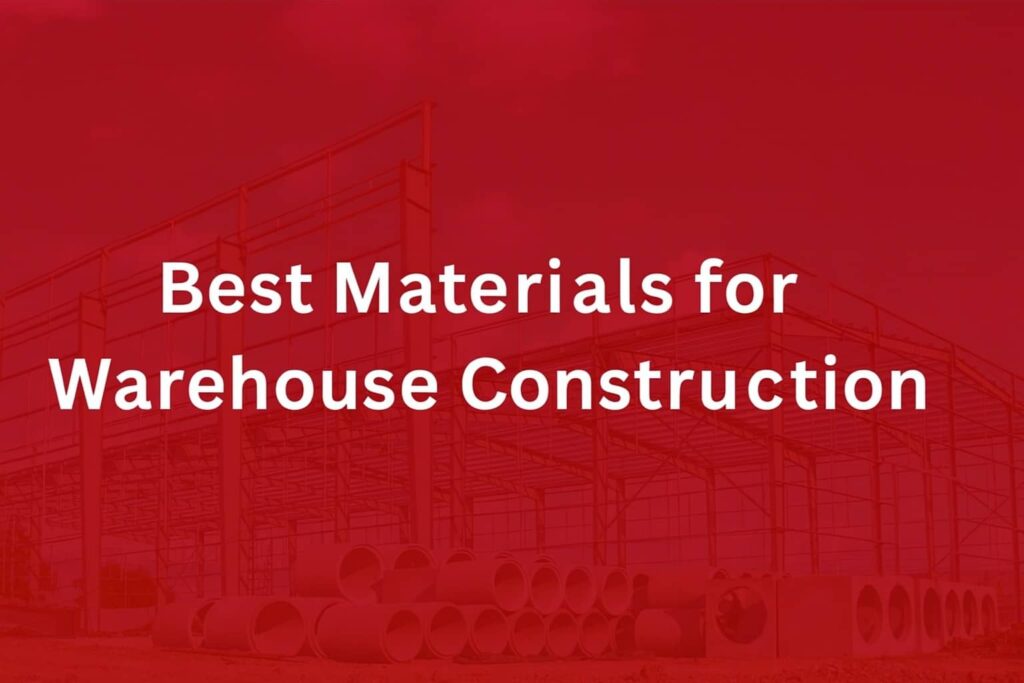In today’s fast-paced business environment, quite often clutter and inefficiency stand in the way of growth and smooth operations. Many business owners find themselves buried under inadequate storage solutions, draining time and funds.
This is where metal building kits come in as a game-changer. These pre-engineered systems are known for being both cost-effective and incredibly efficient to construct. Drawing on detailed industry research, we’ve examined how these kits streamline the construction process by reducing waste, speeding up assembly times, and offering durable structures tailored to unique business needs—all while keeping expenses low and avoiding those feared hidden costs you might worry about.
This article is the next of a series dedicated to mini-storage and self-storage. Last week we wrote a detailed article about the trends in self-storage design. Stay tuned in the following weeks for more articles about mini-storage buildings. If you’re planning on starting a mini-storage business, make sure to check out our other articles for more great tips!
Metal building kits offer a streamlined construction process by providing pre-engineered components that are easy to assemble, reducing construction time and labor costs. The kits also offer flexibility in customization, allowing for efficient adaptation to specific project requirements.
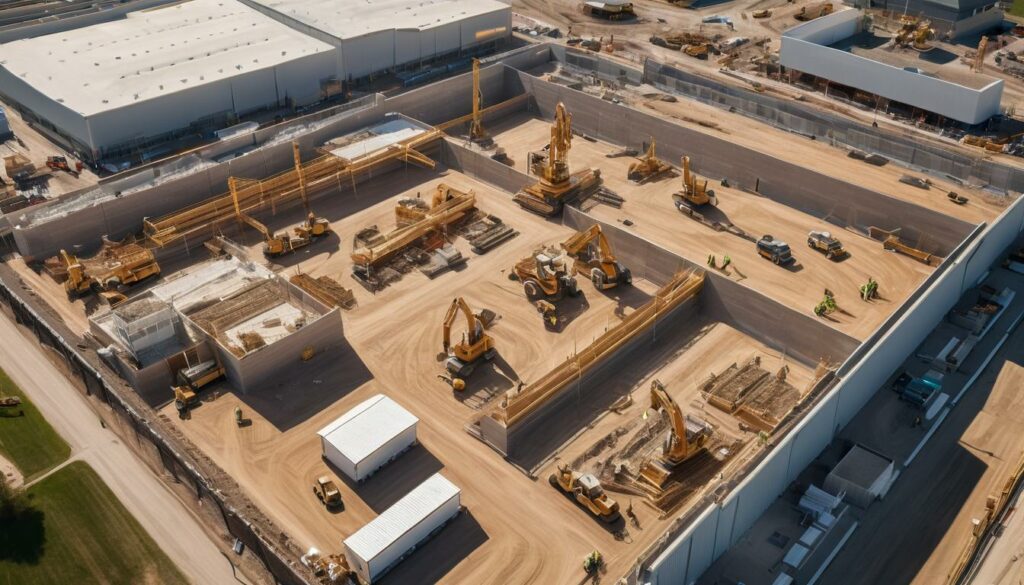
What are Metal Building Kits?
Metal building kits have revolutionized the construction industry by offering an innovative and practical approach to building structures. They are pre-engineered systems that come with every component needed to erect a building, primarily featuring steel or other metal materials, providing durability, strength, and cost-effectiveness.
When you open a metal building kit, it’s like unwrapping a giant puzzle with detailed instructions for assembly. This prefabricated nature makes them an excellent choice for individuals looking to embark on do-it-yourself projects or needing a quick and efficient construction solution. The components are designed to fit together seamlessly, making the construction process smooth and hassle-free.
Imagine receiving a large box containing precisely cut metal panels for walls and roofing, sturdy structural frames that form the skeleton of the building, essential fasteners, and sometimes even insulation to regulate temperature. It’s like getting all the pieces of a complex jigsaw puzzle neatly packed and ready for assembly.
Key Aspects of Metal Building Kits
One of the most striking features of metal building kits is their ability to reduce waste and streamline the construction process. By offering standardized parts, these kits ensure that excess materials are minimized, leading to less wastage. This not only benefits the environment but also contributes to cost-effectiveness—a win-win situation for both builders and the planet.
In traditional construction projects, significant amounts of material often go unused, leading to wastage and increased costs. However, metal building kits are precision-engineered to minimize this issue. The intricate planning involved in creating these kits ensures that every component has a specific purpose and fits seamlessly with the others. This level of precision enhances efficiency while reducing the margin for error during construction.
Think of it as putting together a model airplane kit—each piece has its place and function, contributing to the overall structure. With metal building kits, there’s no need to sift through piles of different materials on-site or engage in extensive cutting or modification. It’s like having a well-designed blueprint come to life with precision-engineered parts.
Understanding these key aspects sheds light on the efficiency and effectiveness of metal building kits in modern construction practices.
Benefits of Metal Building Kits
Building with metal offers numerous advantages. Let’s explore some of the benefits of using metal building kits for construction.
Cost-Effectiveness
Metal building kits can significantly lower construction costs. Industry reports indicate that they can be up to 30% cheaper than traditional building methods. This reduction in expenses covers materials, labor, and ongoing maintenance. Saving money during construction can free up funds for essential aspects or help expand your project without breaking the bank.
For anyone overseeing an architectural project, significant cost savings mean that funds can potentially be reallocated for upgrades and amenities that might have been beyond reach financially.
Speed of Assembly
One of the greatest advantages of metal building kits is the quick assembly time. These kits often come with pre-cut and pre-drilled components, allowing for faster build times. For instance, a standard self-storage unit might be assembled in a matter of days rather than weeks. The quicker a building goes up, the faster it can begin generating returns on investment, whether it’s used as a storage facility, office space, or any other purpose.
Durability
Structures built with metal building kits are resistant to pests, fires, and extreme weather conditions due to their steel composition. Their longevity translates to lower maintenance costs and a longer lifespan. Imagine having a structure that stands the test of time—shielding its inhabitants from harsh elements while requiring minimal maintenance year after year.
Customization
Many providers offer customization options to fit specific needs, including different sizes, colors, and layouts. These options allow for personalized designs without compromising the efficiency of pre-engineered components.
Some may think that pre-engineered means compromising on uniqueness, but with customization options available, you’re not just getting efficiency; you’re also getting a personalized touch tailored to your specific needs.
Eco-Friendly
Metal buildings are often more sustainable than traditional buildings made from other materials. Steel is 100% recyclable, and structures made from these kits can be disassembled and reused, reducing the environmental footprint.
The benefits of metal building kits extend far beyond just construction—they impact cost savings, speed of assembly, durability, customizability, and their eco-friendly nature—all contributing factors to their growing popularity as a cost-effective and efficient solution for various construction needs across different industries.
Understanding the benefits of metal building kits is crucial for making an informed decision when selecting the best one for your specific construction needs. Let’s now turn our attention to exploring important considerations when choosing a kit tailored to your requirements.
Selecting the Best Kit for Your Needs
Choosing a metal building kit that aligns perfectly with your unique requirements is crucial. Whether you are planning to construct a self-storage facility, a warehouse, or any other structure, there are several key considerations to keep in mind.
Assess Your Requirements
Before purchasing a metal building kit, take the time to assess your needs. Consider the size, layout, and specific purpose of the building you intend to construct. For instance, if you are planning a self-storage facility, determine the number of units required and their varying sizes.
Consider drafting a rough layout of how you envision the interior space of your building. This can help identify potential challenges or additional features needed for your customizations. Having a clear picture of your specific requirements is vital for guiding you through the selection process.
Understand Local Regulations
Local building codes and zoning laws play a pivotal role in dictating what types of structures can be built in specific areas. Before finalizing the purchase of a metal building kit, verify that it complies with all relevant local regulations.
Consulting with a professional contractor who is familiar with local construction standards and regulations can prevent costly setbacks and ensure that your project progresses smoothly without running into legal hurdles.
Evaluate the Seller
The credibility and reliability of the supplier offering metal building kits are paramount. In addition to comparing prices, dive into customer reviews and case studies related to the supplier’s products and customer service.
For instance, a supplier with numerous positive reviews highlighting exceptional after-sales support and product durability could instill confidence in their metal building kits for your construction project.
Customization Options
The ability to customize the design and features of your chosen metal building kit is critical to ensuring that it meets your specific needs and preferences. Look for suppliers that offer comprehensive customization options, including different color choices, door configurations, insulation types, and additional structural elements.
When exploring customization options, prioritize functionality and practicality while also considering aesthetic appeal. The flexibility offered by customizable features allows you to tailor the final structure to precisely match your envisioned outcome.
Compare Prices
While upfront cost is significant in selecting a metal building kit, consider long-term value rather than focusing solely on the initial expense. Obtain quotes from multiple suppliers and evaluate them not only based on price but also taking into account factors such as build quality, warranty offerings, and post-purchase support.
By carefully assessing your requirements, ensuring regulatory compliance, thoroughly evaluating suppliers, prioritizing customization options, and comparing prices comprehensively, you can confidently select the best metal building kit that aligns with your construction needs while maintaining cost-effectiveness over the long term.
As you embark on assembling your chosen metal building kit, understanding the intricacies of construction will be instrumental in bringing your vision to life. Let’s now dive into the comprehensive guide to assembly.
Complete Guide to Assembly
Once you’ve chosen and received your metal building kit, it’s time to get it assembled. Depending on the size and complexity of the structure, assembly may require a fair bit of time and effort. But fear not, I’m here to break down the process for you step by step, making it as simple as pie.
Step I – Site Preparation
First things first, ensure that the ground at the construction site is level and free from debris. This will create a stable base for your building. If you’re erecting a heavy-duty structure, such as a large storage facility or workshop, a concrete foundation may be necessary to support its weight. It’s important to check local building codes and regulations regarding foundations if you want to avoid any surprises during inspection.
A sturdy foundation can significantly impact the long-term stability and durability of your metal building. Take the time to get this crucial step right.
Step II – Unpacking and Inventory
Now comes the exciting part—unpacking your shiny new metal building kit! Carefully unpack all the components and check them against the inventory list provided by the manufacturer. This step is essential to ensure that you have received all the necessary parts and nothing is missing. It also sets the stage for a smooth assembly process without any unexpected hiccups.
Pro-tip: Organize the components in a systematic manner during unpacking. It will make it easier to locate what you need during assembly, saving you time and frustration later on.
Step III – Frame Erection
The backbone of your metal building is its frame. During this step, you’ll need to assemble the frame following the instructions provided by the kit manufacturer. Pay close attention to details and use the provided diagrams to correctly align each component. Precision is key here—you want to ensure that the frame is structurally sound and properly aligned before moving on to the next steps.
This step is crucial in ensuring your building’s structural integrity. Errors at this stage can propagate throughout the rest of the assembly process.
Step IV – Installing Panels
With the frame in place, it’s time to attach the wall and roof panels securely. Proper alignment and fastening are critical here. Ensure that each panel fits snugly in place and is securely fastened according to the manufacturer’s instructions.
Think of it like putting together a giant 3D puzzle—the pieces (or panels, in this case) need to fit together perfectly for your structure to take shape correctly.
Step V – Insulation and Finish
After securing all the panels, move on to adding any required insulation. Following that, perform the finishing touches such as installing doors, windows, trims, and any other accessories specified by your particular kit.
Keep in mind: This is where customization really comes into play. The ability to tailor your metal building through insulation choices or aesthetic finishes adds value and utility tailored specifically to your needs.
Step VI – Final Inspection
Finally, once everything is assembled and finished according to the manufacturer’s guidelines, conduct a thorough inspection of every component. Check for proper alignment, secure fastening of all parts, and ensure that everything is correctly assembled as per design specifications.
And there you have it! By following these steps, you’ll effectively transform a pile of components into a fully functional metal building—efficiently and with much satisfaction!
Having walked through an overview of assembling a metal building kit, let’s now turn our attention to examining the key components and materials involved in constructing these efficient structures.
Key Components and Materials
When you open your metal building kit, you’ll find several critical components and materials that come together to form your structure. Let’s break down these essential pieces and understand their individual roles.
Steel Framework
The steel framework serves as the backbone of the entire structure. Typically constructed with I-beams or tubing, this resilient framework provides structural integrity and stability to support the entire building. It’s important to ensure that the framework is assembled accurately, following the manufacturer’s specifications to guarantee the safety and durability of the building.
The I-beams or tubing are like the skeleton of your building, holding everything up and supporting its weight. Without a strong and properly assembled framework, the building wouldn’t have the necessary strength to withstand external forces like wind or snow loads.
Panels
In your kit, you’ll receive corrugated metal panels designed specifically for the roof and walls of the structure. These panels are engineered for exceptional durability and weather resistance, providing reliable protection against external elements such as rain, wind, and sunlight. Ensuring proper installation of these panels ensures a watertight and secure building envelope.
Think of these panels as the shield of your building—protecting it from harsh weather conditions and ensuring that the interior remains safe and dry.
Fasteners
Fasteners play a crucial role in holding the entire structure together. High-strength bolts, screws, and other connectors are employed to ensure the stability and integrity of the building. Choosing quality fasteners and utilizing them correctly during construction is vital for creating a robust and secure metal building.
It’s like putting together a jigsaw puzzle—the right connection ensures that every piece fits perfectly together, creating a unified and solid structure.
Insulation
Depending on your climate and specific needs, insulation options such as foam board, fiberglass batts, or reflective foil may be included in your metal building kit. Proper insulation not only regulates interior temperature but also provides energy efficiency by reducing heat transfer through walls, ceiling, and roof. It’s important to choose appropriate insulation material according to your regional climate conditions.
Insulation acts as a thermal blanket for your building, keeping it comfortable regardless of external temperatures while also helping to reduce energy costs.
Accessories
Your kit may include additional accessories like gutters, downspouts, ventilation systems, or other functional components that enhance the overall efficiency and usability of the building. These items add both practical functionality and aesthetic value to your metal building.
Accessories are like the finishing touches on a work of art—they elevate the functionality and visual appeal of your building to create a more complete and fully operational structure.
In understanding how crucial each component is in constructing a metal building kit efficiently, we can now proceed to compare different construction methods in order to highlight their respective advantages.
Comparing Different Construction Methods
When it comes to construction, there are various approaches to building a structure. The traditional method often involves hiring multiple subcontractors, leading to higher labor costs and longer build times. Conversely, metal building kits come with pre-engineered components that reduce the need for specialized labor, resulting in a more streamlined and efficient construction process.
Let’s take a closer look at this. With traditional construction, coordination with various contractors like masons, carpenters, electricians, and plumbers is usually required separately. This adds complexity to the project and increases the potential for scheduling conflicts and delays. Additionally, traditional methods typically involve more hands-on labor and expertise, leading to higher overall costs.
In contrast, metal building kits provide pre-fabricated components designed for easy assembly, reducing the reliance on multiple specialized subcontractors and minimizing coordination required during construction. Therefore, metal building kits offer a more efficient and cost-effective solution compared to traditional methods.
Moving on to the comparison between wood and metal structures, it’s essential to consider long-term durability and maintenance requirements. Wood structures are susceptible to pests and rot, requiring regular maintenance to prevent deterioration. Conversely, metal buildings offer superior durability and require less upkeep over time.
Wooden structures can be prone to termite infestations and decay due to moisture exposure, necessitating ongoing treatments and repairs. In contrast, metal buildings are inherently resistant to pests, mold, and moisture damage. Owners of metal buildings can benefit from reduced maintenance requirements and longer-lasting structures compared to their wooden counterparts.
Now let’s consider prefab versus custom-built options. Prefabricated metal kits strike a balance between standardization and customization by offering a range of design options while leveraging pre-engineered components. This makes them a more affordable and faster alternative to fully custom-built structures.
Prefabricated metal building kits are designed for ease of assembly while still allowing for customization in terms of size, layout, and features. Customers can enjoy the benefits of a tailored building solution without the extended timelines typically associated with fully custom builds. This balance between standardization and customization positions prefab metal kits as an efficient choice for those seeking cost-effective yet personalized building solutions.
By comparing these different construction methods, we can see that metal building kits offer advantages in terms of streamlined construction processes, long-term durability, and customizable options while maintaining cost-efficiency. It’s clear that choosing the right construction method is crucial in achieving optimal efficiency and cost-effectiveness in building projects.
As we move from analyzing construction methods to practical tips for efficient construction projects…
Tips for Efficient Construction
When it comes to construction, proper planning is essential. Here are a few guidelines to ensure your metal building project is not only efficient but also successful.
Plan Ahead
Creating a detailed construction plan is fundamental to keeping your project on track. Think of it as a roadmap that provides direction and guidance throughout the entire build. Your plan should include timelines for each stage of the construction process, along with key milestones that need to be achieved. This meticulous planning ensures that you have a clear understanding of the project scope and can anticipate and address any potential challenges before they become obstacles.
Safety First
Ensuring the safety of everyone involved in the construction process should always be a top priority. Equipping all workers with the appropriate safety gear, including gloves, helmets, and harnesses when working at heights, is crucial. Implementing strict safety protocols not only protects the well-being of the workers but also contributes to the smooth and efficient progress of the project by minimizing injuries and accidents.
Use the Right Tools
Having the proper equipment is vital for ensuring the smooth assembly of a metal building kit. Power drills, wrenches, levels, and other essential tools can significantly expedite the construction process. It’s important to invest in high-quality tools and maintain them properly to prevent unnecessary delays due to equipment malfunction or inadequacy.
Work in Teams
Efficient teamwork plays a major role in expediting the construction process. Assembling the frame and panels of metal buildings can be significantly streamlined with an effective team. Planning for adequate manpower not only speeds up the construction but also ensures that tasks are divided efficiently, optimizing productivity and reducing construction time.
Follow the Instructions
Adhering closely to the instructions provided with the metal building kit is paramount. These instructions are designed to guide you through each step of the construction process, preventing errors and ensuring that the building meets all specifications and safety standards. Ignoring or deviating from these instructions can lead to mistakes that may compromise the structural integrity and safety of the building.
By implementing these guidelines, you can streamline your metal building construction project while ensuring efficiency, safety, and adherence to quality standards.
Want To Talk About Metal Building Kits?
Maximize your construction efficiency today with our expertly crafted metal building kits! If you’re ready to start your project, contact us or call us at 865-316-9009. Also, if you like our content and want to stay up to date, follow us on Facebook at https://www.facebook.com/roimetalbuildings!
